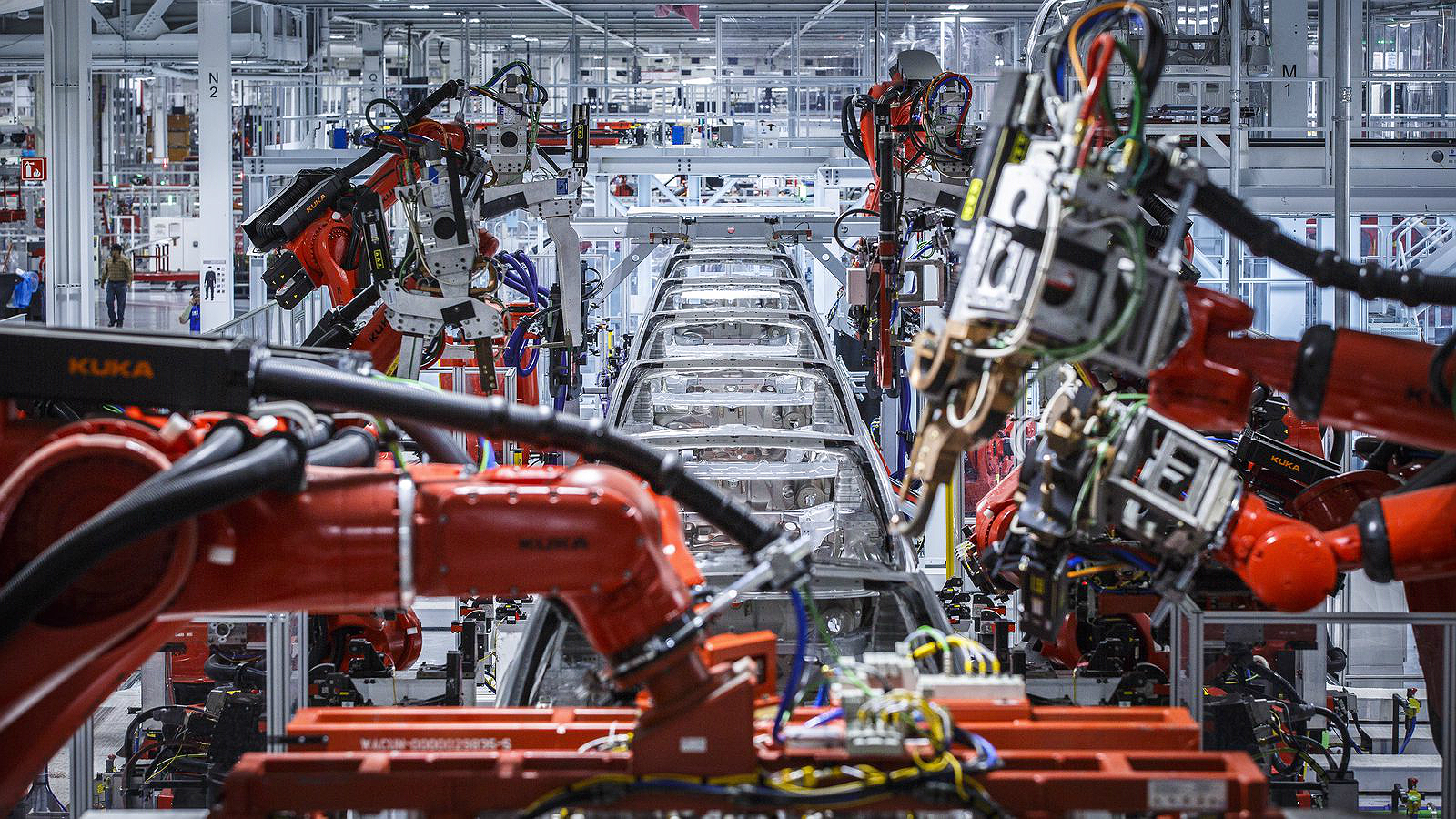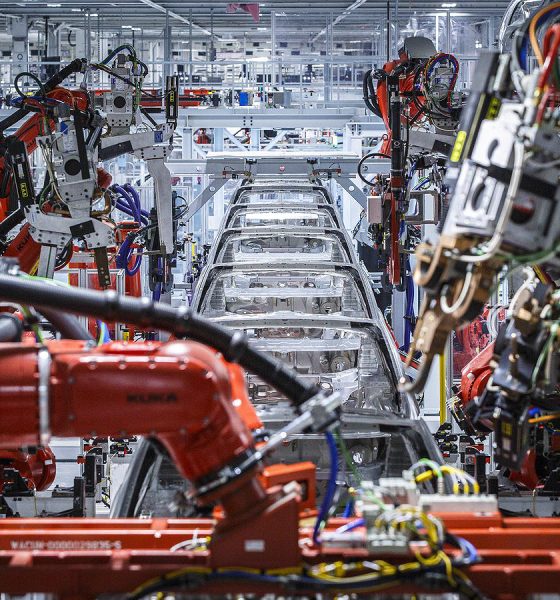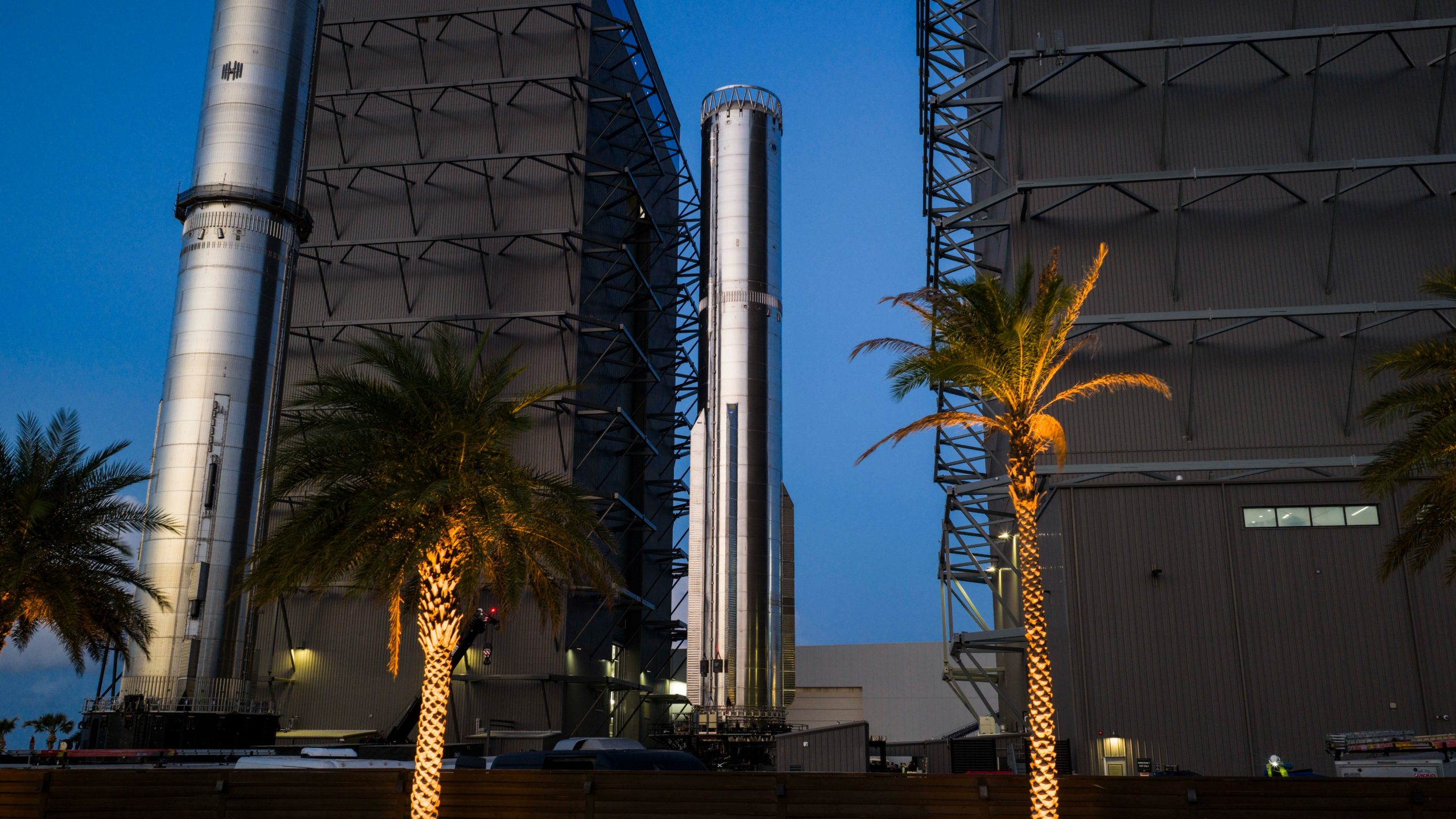

News
Tesla’s damage monitoring patent hints at cars driving to repair centers autonomously
Despite being cutting-edge machines that could be described as “the most fun thing” that anyone can possibly buy, Tesla’s electric cars are still subjected to a great deal of stress during operation. Electric cars have fewer moving parts than their fossil fuel-powered counterparts, but nevertheless, the components that move, such as their electric motors and suspension, are still subject to different types of stress.
One of Tesla’s recently published patent applications, titled “System and Method for Monitoring Stress Cycles,” discusses this particular issue. As noted by the electric car maker, machines may heat up or cool down, or speed up and slow down at different times during operation, resulting in thermal and mechanical stress. Over time, such stress could result in decreased performance, which is referred to as damage.
Damages are costly and hazardous. Stress-related damage results in equipment downtime, performance degradation, safety hazards, and maintenance expenses, to name a few. In the case of Tesla’s electric cars, these damages can cause breakdowns, or worse, accidents. To prevent this, strategies are usually employed to detect and address stress-related damage, such as repairing damaged parts or replacing components at set intervals. Tesla notes in its patent application that both practices are time-consuming and costly.
“Even regular inspections may not provide adequate protection against stress-related damage. For example, the inspections may not provide sufficient insight into the characteristics of the stresses imposed on a given component to accurately assess its condition. Moreover, the inspections themselves may be burdensome and costly,” the company wrote.
With this in mind, there is a need for a system that can detect and address stress-related damage in a more efficient and cost-effective manner.

Tesla’s recently published patent application outlines a system involving a processor configured to monitor stress imposed on subsystems while determining the cumulative damage to a vehicle’s systems. Tesla notes that a stress monitoring system would work optimally if the processor is configured to monitor stress cycles in real-time, allowing the system to avoid using too much memory in the process. Tesla describes the concept in the following discussion.
“To address these challenges, processor 140 may be configured to monitor stress cycles in real-time. For example, processor 140 may identify and record stress cycles concurrently while receiving the series of stress values from stress sensors 131-139. In some embodiments, for each received stress value in the series of stress values, processor 140 may perform one or more operations to determine whether a stress cycle has been completed. When processor 140 detects the end of a stress cycle, processor 140 may record the stress cycle immediately, such that the cumulative damage model can be continuously updated to reflect the latest recorded stress cycle.
“In some examples, real-time monitoring of stress cycles may be performed without storing the series of stress values in memory 150. For example, rather than storing a complete series of stress values for later data processing, a comparatively small number of stress values may be stored temporarily to track in-progress stress cycles, but other stress values may be discarded as soon as they are received. Accordingly, the amount of memory used during real-time monitoring of stress cycles may be reduced in comparison to alternative approaches.”
Adopting such a system gives notable benefits to electric car owners. By using a real-time monitoring model, for one, drivers would be notified by their vehicles once a component needs maintenance. In some instances, the car could immediately send stress and damage data to the company. Taking the concept even further, Tesla notes that a vehicle equipped with autonomous driving features would be able to drive itself to a service center when it needs repairs.
“In some embodiments, an operator of vehicle 110 may be notified when damage to subsystems 121-129 is detected. For example, the operator may be alerted when the level of damage reaches a predetermined threshold, such that the operator may take an appropriate remedial action (e.g., bringing vehicle 110 in for maintenance). In one illustrative example, when the level of damage is represented as a damage fraction, the operator may be alerted when the fractional damage to a given subsystem reaches 70%. In some examples, the alert may be communicated to the operator via a dashboard 160 (and/or another suitable control/monitoring interface) of vehicle 110.
“In some examples, processor 140 may be coupled to one or more external entities over a network 170. Accordingly, processor 140 may be configured to send stress cycle and/or damage data over network 170 to various recipients. For example, processor 140 may send stress cycle and/or damage data to a service center, such that service center may contact the operator to schedule a maintenance appointment when a damaged subsystem is identified. Additionally or alternately, when vehicle 1 10 is an autonomous vehicle, vehicle 110 may be instructed to drive autonomously to service center for repairs.”
Tesla is arguably one of the most proactive companies in the auto industry. For example, automotive teardown expert Sandy Munro has already dubbed the company’s batteries as the best in the market today, but Tesla’s Automotive President Jerome Guillen has stated that the company is still constantly making its batteries even better. In an interview with CNBC, Guillen pointed out that the design of Tesla’s battery cells is “not frozen.” With this in mind, it is not very surprising to see Tesla exploring proactive new ways to figure out more effective ways to monitor damages on its electric vehicles.
Tesla’s constant initiative to improve is teased somewhat in the patent applications from the company that has been published over the past few months. Among these include an automatic tire inflation system that teases off-road capabilities for the company’s vehicles, a system that addresses panel gaps during vehicle assembly, a way to create colored solar roof tiles, and even a system that uses electric cars as a way to improve vehicle positioning.
The full text of Tesla’s recently published patent application could be accessed here.

Elon Musk
SpaceX issues statement on Starship V3 Booster 18 anomaly
The incident unfolded during gas-system pressure testing at the company’s Massey facility in Starbase, Texas.

SpaceX has issued an initial statement about Starship Booster 18’s anomaly early Friday. The incident unfolded during gas-system pressure testing at the company’s Massey facility in Starbase, Texas.
SpaceX’s initial comment
As per SpaceX in a post on its official account on social media platform X, Booster 18 was undergoing gas system pressure tests when the anomaly happened. Despite the nature of the incident, the company emphasized that no propellant was loaded, no engines were installed, and personnel were kept at a safe distance from the booster, resulting in zero injuries.
“Booster 18 suffered an anomaly during gas system pressure testing that we were conducting in advance of structural proof testing. No propellant was on the vehicle, and engines were not yet installed. The teams need time to investigate before we are confident of the cause. No one was injured as we maintain a safe distance for personnel during this type of testing. The site remains clear and we are working plans to safely reenter the site,” SpaceX wrote in its post on X.
Incident and aftermath
Livestream footage from LabPadre showed Booster 18’s lower half crumpling around the liquid oxygen tank area at approximately 4:04 a.m. CT. Subsequent images posted by on-site observers revealed extensive deformation across the booster’s lower structure. Needless to say, spaceflight observers have noted that Booster 18 would likely be a complete loss due to its anomaly.
Booster 18 had rolled out only a day earlier and was one of the first vehicles in the Starship V3 program. The V3 series incorporates structural reinforcements and reliability upgrades intended to prepare Starship for rapid-reuse testing and eventual tower-catch operations. Elon Musk has been optimistic about Starship V3, previously noting on X that the spacecraft might be able to complete initial missions to Mars.
Investor's Corner
Tesla analyst maintains $500 PT, says FSD drives better than humans now
The team also met with Tesla leaders for more than an hour to discuss autonomy, chip development, and upcoming deployment plans.

Tesla (NASDAQ:TSLA) received fresh support from Piper Sandler this week after analysts toured the Fremont Factory and tested the company’s latest Full Self-Driving software. The firm reaffirmed its $500 price target, stating that FSD V14 delivered a notably smooth robotaxi demonstration and may already perform at levels comparable to, if not better than, average human drivers.
The team also met with Tesla leaders for more than an hour to discuss autonomy, chip development, and upcoming deployment plans.
Analysts highlight autonomy progress
During more than 75 minutes of focused discussions, analysts reportedly focused on FSD v14’s updates. Piper Sandler’s team pointed to meaningful strides in perception, object handling, and overall ride smoothness during the robotaxi demo.
The visit also included discussions on updates to Tesla’s in-house chip initiatives, its Optimus program, and the growth of the company’s battery storage business. Analysts noted that Tesla continues refining cost structures and capital expenditure expectations, which are key elements in future margin recovery, as noted in a Yahoo Finance report.
Analyst Alexander Potter noted that “we think FSD is a truly impressive product that is (probably) already better at driving than the average American.” This conclusion was strengthened by what he described as a “flawless robotaxi ride to the hotel.”
Street targets diverge on TSLA
While Piper Sandler stands by its $500 target, it is not the highest estimate on the Street. Wedbush, for one, has a $600 per share price target for TSLA stock.
Other institutions have also weighed in on TSLA stock as of late. HSBC reiterated a Reduce rating with a $131 target, citing a gap between earnings fundamentals and the company’s market value. By contrast, TD Cowen maintained a Buy rating and a $509 target, pointing to strong autonomous driving demonstrations in Austin and the pace of software-driven improvements.
Stifel analysts also lifted their price target for Tesla to $508 per share over the company’s ongoing robotaxi and FSD programs.
Elon Musk
SpaceX Starship Version 3 booster crumples in early testing
Photos of the incident’s aftermath suggest that Booster 18 will likely be retired.

SpaceX’s new Starship first-stage booster, Booster 18, suffered major damage early Friday during its first round of testing in Starbase, Texas, just one day after rolling out of the factory.
Based on videos of the incident, the lower section of the rocket booster appeared to crumple during a pressurization test. Photos of the incident’s aftermath suggest that Booster 18 will likely be retired.
Booster test failure
SpaceX began structural and propellant-system verification tests on Booster 18 Thursday night at the Massey’s Test Site, only a few miles from Starbase’s production facilities, as noted in an Ars Technica report. At 4:04 a.m. CT on Friday, a livestream from LabPadre Space captured the booster’s lower half experiencing a sudden destructive event around its liquid oxygen tank section. Post-incident images, shared on X by @StarshipGazer, showed notable deformation in the booster’s lower structure.
Neither SpaceX nor Elon Musk had commented as of Friday morning, but the vehicle’s condition suggests it is likely a complete loss. This is quite unfortunate, as Booster 18 is already part of the Starship V3 program, which includes design fixes and upgrades intended to improve reliability. While SpaceX maintains a rather rapid Starship production line in Starbase, Booster 18 was generally expected to validate the improvements implemented in the V3 program.
Tight deadlines
SpaceX needs Starship boosters and upper stages to begin demonstrating rapid reuse, tower catches, and early operational Starlink missions over the next two years. More critically, NASA’s Artemis program depends on an on-orbit refueling test in the second half of 2026, a requirement for the vehicle’s expected crewed lunar landing around 2028.
While SpaceX is known for diagnosing failures quickly and returning to testing at unmatched speed, losing the newest-generation booster at the very start of its campaign highlights the immense challenge involved in scaling Starship into a reliable, high-cadence launch system. SpaceX, however, is known for getting things done quickly, so it would not be a surprise if the company manages to figure out what happened to Booster 18 in the near future.








